Showing 11–20 of 22 results
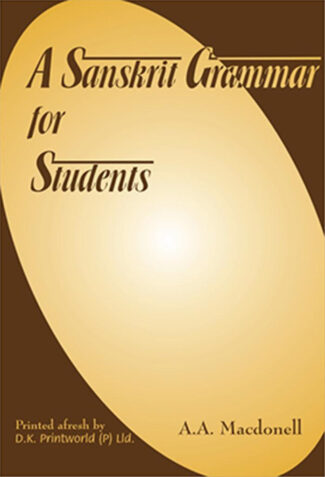
This fresh typesetting of Prof. Macdonells work explains the mechanics of the Sanskrit languages euphonic combinations (sandhi), declension, conjugation, nominal stem formation and compounds, etc., with insights into the syntactical arrangement of Sanskrit sentence.
It is an altogether fresh reprint of the eminent Orientalist, Arthur Macdonells A Sanskrit Grammar (1927 edition: Oxford). Which, ever since its first appearance, has been widely acclaimed both in India and elsewhere in the world, as an authentic, at once relevant account of classical Sanskrit.
Projecting, with well-chosen examples, a whole mass of grammatical forms to be met with in the post-Vedic Sanskrit literature, the author systematically explains the mechanics of its euphonic combinations (sandhi), declension, conjugation, nominal stem formation and compounds, and a lot else — with complete insights into the syntactical arrangement of Sanskrit sentence. Supported by several information-packaged appendices, the book also carries a brilliant resume of the Sanskrit grammatical tradition going back to the 5th century BC.
Now typeset anew with the latest technological aids, the late Macdonells work today remains as much indispensable to the students of Sanskrit as to the scholars, who seek to discover for themselves the splendour of its literary classics.

The volume aims at sharpening the skills of translating the Sanskrit philosophical texts so as to retain fundamental concreteness, basic dynamics and original flavour. The volume particularly highlights the use and significance of prefixes in the backdrop of leading Indian philosophical texts.
This volume attempts to present a dynamic approach to translating Sanskrit philosophical texts while emphasizing on keeping certain principles in mind when rendering Sanskrit philosophical texts such as: the fundamental concreteness, the basic dynamics, the resultant ambiguity and the necessary congruence of the term in question with the specific context in which it is introduced. In this context, it particularly throws light on the use and significance of prefixes, particularly of propositions used as prefixes, in Sanskrit philosophical terminology. It also examines the basic problem in dealing with prefixes; their relation to the verbal roots to which they are attached. It studies the philosophical texts of various leading schools and systems including Vedanta, Mimamsa, Samkhya, Yoga, Nyaya, Vaisesika, Buddhism and Jainism, to examine the compound-terms in them and the mental operations which are grammatically and philosophically expressed. Study of the variation of terms brought about by the application of prefixes is intended. It argues that the prefixes throw into relief, by the different modes of their application, the specific bent of the systems themselves. They have retained the motional and emotional significance, which they apparently once had, at the earliest stage. The book also takes up some vital questions, such as, whether the prefix or the noun is the essential bearer of the meaning.
The volume is a well-researched study of the use of language in Sanskrit philosophical texts. It will prove useful to scholars and students of Indology, particularly those concerned with Sanskrit language and philosophy.
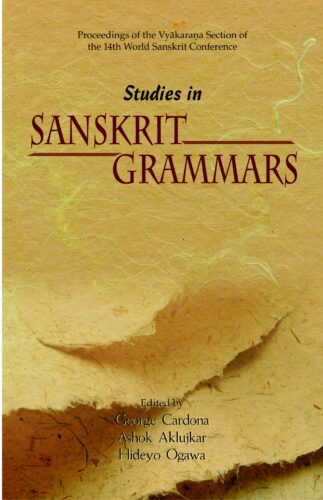
This book addresses issues in Sanskrit grammar, principally Paninian grammar, works of Paniniyas, including Patanjalis Mahabhasya, Bhartrharis Vakyapadiya, etc. It also covers the Sanskrit grammar of Paulinus a Sancto Bartholomaeo, and includes a study examining whether formal hand gestures in Indian dance could come within the range of vyakarana.
The importance of ancient and medieval contributions in India to the field of vyakarana and thereby to our knowledge of grammar and the history of linguistics is universally accepted. This volume presents sixteen contributions to this field of study which were presented at the fourteenth World Sanskrit Conference held in Kyoto, Japan, September 1st-5th 2009. The papers cover a wide range of subjects, both chronologically and thematically. Most of the studies concern aspects of Paninian grammar, with respect to both Paninis grammar proper and to works of Paniniyas, including Patanjalis Mahabhasya, Bhartrharis Vakyapadiya and the Kasikavrtti of Jayaditya and Vamana. There are also contributions that range farther afield, covering the Sanskrit grammar of Paulinus a Sancto Bartholomaeo, Paninian features to be seen in the Lilatilakam of fourteenth century Kerala, and a study considering whether formal hand gestures used in Indian dance can possibly come within the range of what is called vyakarana. This collection should be of interest not only to Sanskritists but also more generally to students of Indian culture and linguists.
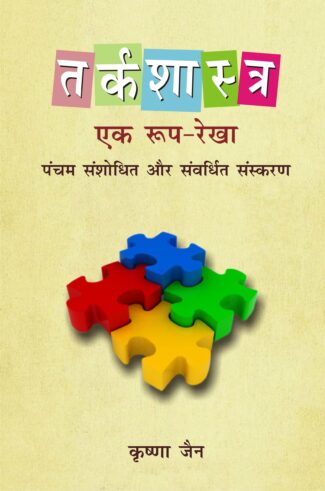
The present book is the fourth enlarged edition of the earlier book Tarkasastra Ek Roop Rekha. The current edition includes an additional chapter on Uses of Language and its Functions. Like the earlier book, the present book sets forth the principles and procedures of elementary Logic in the most simplified way and is specifically designed and intended for the use of undergraduate students. It contains almost all the main topics on Deductive, Inductive and Symbolic Logic prescribed in the syllabi of different universities in the country.
The present book is the fourth enlarged edition of the earlier book A Text Book of Logic-An Introduction. The current edition includes an additional chapter on Uses of Language and its Functions. Like the earlier book, the present book sets forth the principles and procedures of elementary Logic in the most simplified way and is specifically designed and intended for the use of undergraduate students. It contains almost all the main topics on Deductive, Inductive and Symbolic Logic prescribed in the syllabi of different universities in the country. The book attempts to present a clear perspective on Logic as a science of correct reasoning. In the introductory chapter the aim of Logic and the task of a Logician are elaborated. Other topics covered here are Terms, Propositions, Immediate Inference, Syllogism, Boolean Equations, Venn Diagrams, Anti-Logism Theorem, Truth Functions, Truth Table, Deductive Method, Predicate Calculus, Scientific Inductions, Causation, Mill’s Methods and Informal Fallacies to mention a few. All the topics are explained with the help of diagrams and lucid examples. Each chapter is followed by plenty of exercises for the benefit of students.
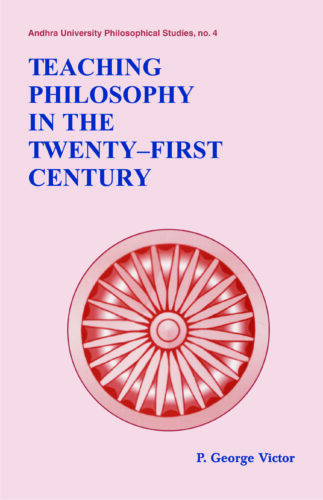
The papers study various aspects of teaching philosophy: its methods, models, techniques and associated problems and prospects. They scrutinize philosophy curriculum in universities and use of computers for teaching it. They discuss ways to popularise philosophy and introduce it at the elementary level in schools.
The relevance of philosophy in the strife torn world of today cannot be undermined: going into the why of ideas, philosophy examines the importance of concepts and ways to cultivate values, and foster them. But its growing unpopularity particularly as a discipline of study warrants specific attention. The book explores an important factor responsible for this the way in which philosophy is taught. The papers, presented at a national seminar sponsored by Indian Council of Philosophical Research, look into various aspects of teaching philosophy: its methods, models, techniques, associated problems and prospects in the coming decades to highlight the nature and relevance of philosophy. They scrutinise the philosophy curriculum in universities today and study the methods of teaching philosophy in ancient India, with their stress on summarising the essence of philosophical doctrines in sutras or aphorisms. Scholars from the West in their thought-provoking analyses present the changing patterns of curriculum and syllabus of philosophy, and the use of computers and science fiction for the purpose. The Indian teachers of philosophy, both old and young, emphasise on acquainting the students with philosophy right from the school level, and teaching philosophy in an entertaining yet edifying manner by presenting life stories of philosophers and teaching through novel methods. They discuss the need to introduce and popularize philosophy among people in general so as to make philosophy a way of life that can usher in moral and spiritual progress in the Twenty-first Century.
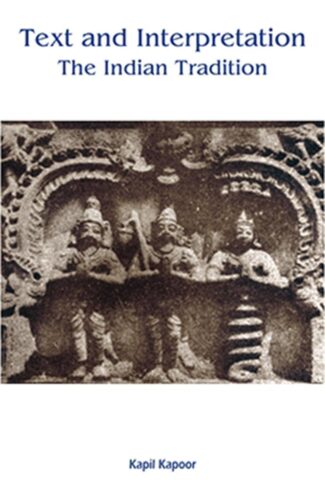
The present study is the comprehensive analysis of interpretative tradition, concerned with the problem of determining meaning in verbal texts, and examines the nature of the texts and the typology of textual situations. It investigates the instruments of interpretation and illustrates their use in various texts and exegetes.
Linguistic communities are interpretative they have shared frameworks and strategies to fix the meaning of what is experienced through senses or communicated through language. India presents one such interpretative community in which the three major contending schools of thought the Brahmins, the Buddhists and the Jains flourished and fought. The presence of a strong interpretative tradition suggests the existence of texts and issues that are perennially important and also a certain freedom of mind that the community has enjoyed and guaranteed. The present study is perhaps the first comprehensive analysis of this tradition concerned with the problems of determining meaning in verbal texts. It examines the nature of the texts and the typology of textual situations in response to which a system of interpretation developed and became a shared mode of interpretation, the Shastra-Paddhati. It sets up several typologies of meaning, of textual situations and of the interpretative strategies. The book then investigates the instruments of interpretation, verbal testimony, sarvabhauma siddhanta (the meta-principle), sangati (coherence), paribhasha (metarules), laukika-nyaya (common principles of judgement), vyakarana (grammar), nirvacana, (exposition or etymology) and verbal symbolism and illustrates the use that is made of them in different kinds of texts, shruti, smriti and kavya, and by different exegetes such as Shankara. At a time of resurgence of interest in the Indian intellectual traditions in grammar, philosophy, logic, theories of meaning and poetics and as part of a transdisciplinary search for abstract structures of knowledge this book should be of interest to students and scholars of Indian languages, linguistics, semiotics and literatures and generate lively intellectual controversy among scholars and motivate further research and study in these areas.
This book sets forth the principles and procedures of elementary Logic in a more simplified way. The enlarged edition of A Text Book of Logic Þ An Introduction, it includes an additional chapter on Uses of Language and its Functions besides the main topics on Deductive, Inductive and Symbolic Logic prescribed by various universities.
The present book is the fifth enlarged edition of the earlier book A Text Book of Logic An Introduction. The current edition includes additional chapters on Arguments and Explanations, and Dilemma. Like the earlier book, the present book sets forth the principles and procedures of elementary Logic in the most simplified way and is specifically designed and intended for the use of undergraduate students. It contains almost all the main topics on Deductive, Inductive and Symbolic Logic prescribed in the syllabi of different universities in the country.
The book attempts to present a clear perspective on Logic as a science of correct reasoning. In the introductory chapter the aim of Logic and the task of a Logician are elaborated. Other topics covered here are Terms, Propositions, Immediate Inference, Syllogism, Boolean Equations, Venn Diagrams, Anti-Logism Theorem, Truth Functions, Truth Table, Deductive Method, Predicate Calculus, Scientific Inductions, Causation, Mill’s Methods and Informal Fallacies to mention a few. All the topics are explained with the help of diagrams and lucid examples. Each chapter is followed by plenty of fresh and exclusive exercises for the benefit of students.
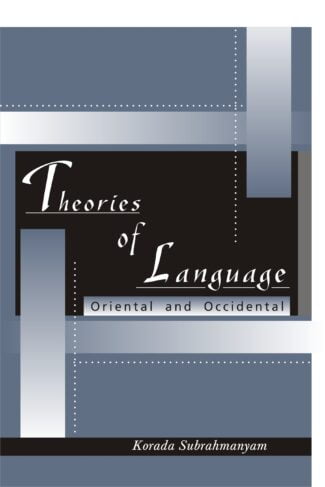
The book is the end result of indepth study and decades’ research on the Oriental and Occidental language theories. The theories that are propounded and expounded by Indian sages and intelligentsia are impeccable, incorrigible and time-tested besides being universal. The book should interest scholars for advanced linguistic study of both kinds.
The volume presents a panorama of the theories of language, covering both ancient and modern theories. It deals with the origin and development of ancient theories of language with their clear and unambiguous definitions, rules and norms that offer impeccable solutions to all problems at syntactic and semantic levels. With systematic and logical explanations of language theories, the work examines ancient grammar including connection of vyakaranam with philosophy and sphota. It also takes up the origin and development of Western linguistic theories emphasising on the inability of modern linguistic science to agree on basic definitions, as of the meaning of a word, and concepts of discourse, text, macro sentence, with there being an attempt to constantly revise theories. It analyses the chief concepts studied by ancient Indian and other linguists pertaining to discourse, particularly the importance of inference in the Nyaya system of Indian philosophy and the Nyaya logical discourse. The volume will provide students and scholars of philosophy a fundamental work on linguistic theories.
Thinker, Thought and Knowledge critically and analytically reasons that some of the philosophical expositions like “thought has created the thinker” and “higher-order thoughts are themselves conscious” hinder us from explaining our sense of unity of consciousness. This book presents and elucidates some observations — thought cannot create thinker; along with thinker and thought, thinking too is quintessential for individual experience to take place; thinker, thinking and thought are fundamentally one in self-consciousness; thought becomes the object of self-consciousness; and the modern science attempts to undermine the principle of causation — from the East—West perspective, and registers its disproval with the philosophical views of scholars like J. Krishnamurti and a few other modern philosophers. Coming to the knowledge aspect, the volume delineates the relative existence and knowledge dealing with the absolute reality, and discusses it on the basis of Advaita Vedanta and the Yogacara Vijiianavada of the Buddhist philosophy along with Immanuel Kant’s theory of knowledge. The researcher’s approach employed in this volume should help the students of philosophy and other discerning readers take an analytical and critical positioning towards many a philosophical problem that they come across.
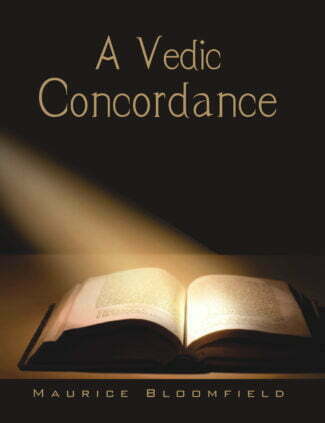
This volume, originally published in 1906 as part of the Harvard Oriental Series, is an alphabetic index to every line of every stanza of the published Vedic literature and to the liturgical formulas; it is an index to the Vedic mantras, together with an account of their variations in the different Vedic books.
This volume, A Vedic Concordance, is part of the Harvard Oriental Series. This reprint of the 1906 edition is an alphabetic index to every line of every stanza of the published Vedic literature and to the liturgical formulas; it is an index to the Vedic mantras, together with an account of their variations in the different Vedic books.
This volume is expected to serve two purposes. 1. It gives a comprehensive index of all the mantras. 2. It registers the variants of mantras that are not wholly identical. In addition, it spells out few secondary uses. (i) It is a key to the liturgical employment of the mantras. (ii) It is virtually a finding-index of rites and practices. (iii) It is a tool for future editors of Vedic texts. (iv) It is a repertory of the most archaic Hindu prose. (v) It also provides some miscellaneous uses to the future researchers in the domain of Vedic studies and sciences.
A must buy for all universities, colleges, institutions, scholars, researchers, and students who are engaged in Vedic studies.
| There are no products |